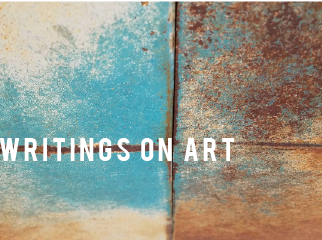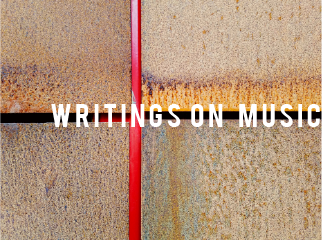Bill Carman
“Drawing Attention: Bill Carman’s creations reel in the big one”
By Katy Dang
Idaho Arts Quarterly |June 2008
https://www.boiseweekly.com/boise/drawing-attention/Content?oid=937015
At the awards ceremony for the New York Society of Illustrators on March 28, 2008, Boise artist Bill Carman didn’t know what to expect.
“I put my nice pants on—you know, not jeans—and a nice T-shirt,” he says. He approached the check-in table with characteristic modesty and began to answer the questions of the young staff member there: Yes, he was there for the ceremony; yes, he had a ticket; yes, he was an artist.
“When I told her my name, she freaked out,” he says. “She called over the other staff members and told them who I was. They had hung the show, and my work was their favorite.”
Carman was, after all, a gold medal recipient that night. He has had his work accepted into the highly competitive Society of Illustrators Annual of Illustration, which honors the best in illustration, for the last five years—no small feat—but this was his first medal. It was also the 50th anniversary of the Annual, which made the night just a little bit more special. Not only was Carman a hit among the younger crowd, but he met many of his favorite artists spanning generations.
The work that won the gold medal, Fine Dining, is a portrait of a civilized-looking blue-eyed rabbit wearing a monocle while carving into the writhing tentacle of an octopus on a plate. The octopus stares at the rabbit with red eyes to match his newly cut flesh. Like many of Carman’s meticulous creations, the piece is at once rich in detail, lustrous to behold, slightly dark, elegant, disarming, lovely, sad and very, very funny.
The proud owner of the piece is Perry Allen, who runs the Basement Gallery in Boise where Carman shows his work. Allen acquired the piece in 2006 during one of Carman’s biannual shows.
“Every piece that he creates speaks to me,” says Allen. “When I saw this piece, I knew that I had to have it in my life. Not a day goes by that I don’t admire that rabbit.”
Allen has been showing Carman’s work for nine years, since Carman walked into his gallery in 1999 with two sheets of slides and an eight-page resume. Carman was teaching drawing and illustration at Boise State and was looking to find a way to connect with the larger art community. He also needed the freedom to do other projects without having strings attached and found a like-minded approach in Allen, who does not bind his artists to contracts.
“I couldn’t believe that a guy of this caliber had walked into my gallery off the street,” says Allen. He remembers setting up the slide projector and pulling the blinds. “The very first image just blew me away,” Allen says. “I just crossed my fingers in the hope that he was serious about letting me show his work.” He was, and Carman had his first show in Boise within six months of their meeting.
Carman’s mind works in mysterious ways, and his level of skill enables him to execute his vision in consummate fashion. His work has a fantastical, fanciful flavor, but cannot be assigned to a specific classification; in a way, that is the point. He works with a lack of restrictions, and this freedom allows him to follow his flights of fancy wherever they take him.
“My work is meticulous in its execution, but my mind scribbles, jumps, spins and spits,” he says.
This talent comes from years of experience, spent honing his craft as a professional artist and graphic designer and as a teacher, all of which have combined to bring him to his current level of expertise. But mostly, it comes from the love of creation, and from his curiosity in discovering what comes next.
Carman was born in Seoul, South Korea, to a Korean mother and American father, and moved to California as a toddler. It wasn’t crowded then, and Carman had miles of hills to play in. He grew up fishing in the streams, rivers and ocean of the central coast. As a teenager, Carman played keyboards and sang in a band that covered the hits of the day—Jimi Hendrix, the Allman Brothers, and Chicago—interspersed with a magic show. “One of the things that got me started thinking about art was the music industry,” says Carman. He cites the cover art of James Flournoy Holmes (Flor Noi) for the Allman Brothers’ 1972 Eat a Peach album as a favorite, as well as the Roger Dean covers for Yes. “Album art was so inspiring then,” he says. “That was the stuff that got me thinking, ‘Wow; people do this for a living.'”
Carman attended Brigham Young University, where he earned a degree in visual communication and illustration. There, he met his mentor, James Christensen, whose work in the realm of fantasy is world-renowned. He also met and married his wife, Mollie. After college, Carman freelanced as a graphic designer for various companies making “cool stuff like video game covers.” They lived in the East for a spell, but missed the West. “I like the West,” says Carman. “It’s open and expansive and there is room to roam.” Carman decided to return to BYU for graduate school in painting.
“My drawings at that point were sort of mixed-media,” says Carman. “My skill level was high, but conceptually I needed work. I worked, and I wrote a lot. I brought thoughts from a place that was foggy to somewhere more concrete. I learned to edit and clarify.” Carman credits Robert Marshall for teaching him to write as an artist and think like a painter.
After earning his MFA, Carman taught at Cardinal Stritch University in Wisconsin for six years. Then he got a call from Gary Rosine, a former professor who was teaching at Boise State. “I came out here to visit, and it was one of those blue-sky days,” says Carman. “The sky just opened up, and I thought: ‘Oh, man. There it is; there’s the West.'” He had already spent time fishing in Idaho. He took a position teaching drawing and illustration at Boise State in 1998 and settled his family in Boise.
Carman has developed a way of teaching that inspires students to step outside of the boundaries set by the educational system and to think for themselves. “We are not built around independent thought or thinking; it’s all been a step-by-step conditioning,” Carman says. “As an artist or an independent thinker, you have to train yourself to stop; to look; to see; to do.”
“He taught me to push the boundaries of my thinking,” says former student Ben Wilson, a graphic designer well-known for his concert posters in the Pacific Northwest. “He showed me that you can approach a project in two ways: You can do it so it shows how technically proficient you are, or you can show the stuff that will really ‘wow’ people.”
One of the things that Carman brings to the table is a sense of fun and enjoyment in what you do. “Bill is of the opinion that, ‘Well, I could draw a pear, but do I really want to draw a still-life pear, or would I rather draw a creepy little long-legged big-bellied thing that eats rodent feet?'” says Jerms Lanningham, a former student whose work has graced Burton snowboards. “He brought that back to the table.”
In his own work, Carman allows humor and imagination to play a leading role. “I’ve been relegated to being ‘whimsical,’ and I’m OK with that,” he says. He prefers to allow his creations to exist on their own, rather than forcing a designation on them. His pleasure in denying expectations lets the images fall freely from his head to the pen or brush. “Some of my best ideas are goofy,” he says. “I’ll put silly things in, like cyclopean bunnies. People who look at my work can define those things.”
The underground art scene that has been percolating on the West Coast for some time and has grown in popularity since the mid-1990s seems to have opened doors for artists who have previously been relegated to the status of being “just an illustrator.” The proliferation of lowbrow, pop-surrealist art—and the fact that there are designations for these art forms in the art world at large—has afforded a blurring of the line that has historically separated illustration from fine art. Now that the underground is above-ground, the doors to galleries and museums are opening to artists who have heretofore existed on the sidelines. “There are more avenues to get exposure,” says Carman. “Things are expanding without me having to change my stripes.”
His approach to his work is to allow it to develop on its own, without already having an image in mind. “Process is everything,” he says. “Doing is the discovery. Mystery is the wonderful part of illustrative artwork; it’s the great ingredient that pushes illustrations along the line. Visiting the unknown is the most exciting part of it, and going in directions that I’m unsure of.”
In 2002, Carman published a children’s book with Random House called What’s That Noise? and is working on a second. His work can be recognizable, but is difficult to generalize because it varies enough in its subject and medium that there are always surprises. His subjects have a real poignancy to them; they may make you laugh out loud, but they can also be very moving. There is something about his wide-eyed, blank-faced beings that contain a certain wistfulness. The interaction of animals with the larger world can be hilarious and tragic, in the same moment, and the machines that function (or not) could be from any of the last three centuries or the future. And the letters, phrases and sentences make for interesting reading, both as visual marks and for their content.
“Fundamentally, it’s about filling my head with stuff,” he says. “I look a lot. I look at annuals all the time and read the images. You establish a vocabulary that you work with, and you read specifically for that vocabulary. I read color combinations, saturation, number of colors used, line weights; texture versus flat color. I’m always asking questions, and I know the questions to ask.”
He is also drawn to the surfaces on which he works and has found that what he creates is often dictated by the material that it is on. “I’m old-fashioned,” he says. “I can’t release the tactile. I love things with a texture and surface, with history and implied history.” He has used old book covers, pages, pieces of wood, Carmex jars, Altoid tins and various found papers. “I always respond to what I am working on,” he explains. “You have to be very delicate on those delicate papers.”
Carman sees some constants in his imagery. “I’ve always had animals in my work,” he says. “I couldn’t tell you why.” As he says this, two pugs lie snoring in his lap, a cat is draped across his legs, and a snake lies curled in its cage behind him in his studio. “Certain things tend to show up, like glasses and monocles. The eyewear adds an amount of anonymity to a character: it calls attention to the eyes but rewards with ambiguity.”
The octopus tends to recur in Carman’s work. “There are images that I recall that tend to show up now and again,” says Carman. “When I was a kid, I was fishing with my family at Moss Landing and I hooked something, I pulled it up and it was just a can. Everybody ridiculed me because I caught a can, but then this octopus spilled out and sprayed ink everywhere. It came out of a regular soup can; it was so loose, it just unfolded, almost like liquid. My mom cooked it up, and eating it was a real delicacy. So sometimes ideas come from a memory and that memory may be applicable directly to something happening or obliquely to a thought already germinating.”
David Andersen, Carman’s fellow painter and fishing buddy, sees his work as a menagerie. “He is the god of his own universe,” says Andersen. “He is truly a master. He is innately gifted with drawing skills, and is a high-performance individual. He is also the best stream fly-fisherman I have ever seen.” Andersen has watched Carman’s work develop over the last 20 years, since they met in graduate school. “His surfaces have become exceptionally rich,” Andersen says. “His work is very tight and organized and thoughtful. He is dealing with deep issues, but in a sneaky, seductive way. I think he understands the frailties of life, and he rejoices in them. But there is a little yang in the yin.”
For his part, count on Carman to continue to do what he does with his typical combination of modesty, confidence, flair, experimental process, and workhorse concentration. There is teaching to be taught and commissions to complete; most of all, there are elusive mysteries to follow, and trace, and communicate visually.
And, as always, there is fishing.



